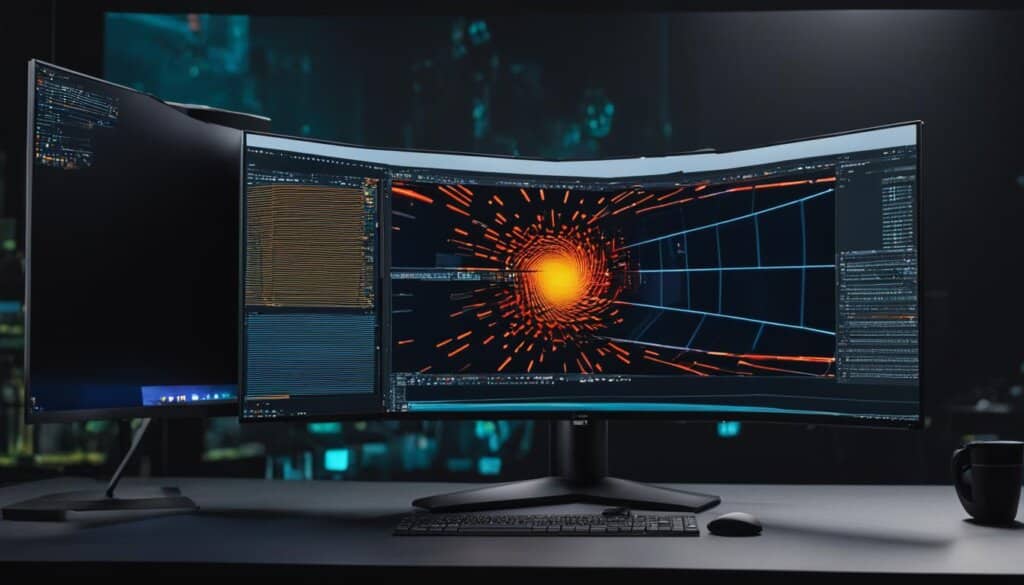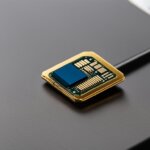Table of Contents
Virtual RAM (VRAM) plays a crucial role in enhancing the graphics performance of a computer, especially for graphics-intensive tasks like gaming and video editing. VRAM is dedicated video memory that enables the graphics card to store and access data quickly, resulting in more responsive and fluid visuals. By maximizing your computer’s VRAM, you can improve its overall graphics capabilities and enhance your gaming and graphic design experiences.
In this article, we will explore the intricacies of VRAM and discuss techniques for increasing VRAM to boost your computer’s graphics performance. We will also delve into the differences between VRAM and regular RAM, as well as optimization techniques to make the most out of your VRAM resources.
Whether you’re an avid gamer, a creative professional, or simply someone who appreciates stunning computer visuals, understanding and optimizing VRAM can take your graphics experience to the next level. Join us as we uncover the secrets behind VRAM and explore ways to enhance your computer’s graphics capabilities.
What Is VRAM and How Does It Work?
VRAM, or video random access memory, is a specialized form of RAM used in graphics processing units (GPUs) to store image data for a computer display. Unlike regular RAM, which is general-purpose memory, VRAM is dedicated solely to handling the graphical demands of applications such as video games and video editing software. It integrates directly into the graphics card and acts as a high-speed buffer between the GPU and the display.
VRAM works in conjunction with the GPU to fetch textures, geometry, shaders, and other graphical assets necessary for rendering images on the screen. Its parallel architecture allows for faster data access and manipulation, resulting in smooth and lag-free graphics performance.
In summary, VRAM is a crucial component in graphics processing units, ensuring efficient storage and retrieval of image data for your computer display.
Why is VRAM Important?
VRAM plays a vital role in delivering high-quality graphics and visual effects. By having dedicated memory for graphics processing, VRAM allows for faster access to data, reducing latency and enabling smoother gameplay and graphic rendering. This dedicated memory ensures that the GPU has the necessary resources to handle complex textures, shaders, and other graphical assets.
Benefits of VRAM:
- Improved graphics performance
- Enhanced visual quality and detail
- Faster loading times for textures and assets
- Reduced lag and stuttering in graphics-intensive applications
“VRAM is to graphics what fuel is to a car. Without it, the GPU would lack the necessary resources to deliver stunning visuals and real-time rendering.”
To summarize, VRAM is essential for delivering immersive and visually stunning experiences on your computer display.
Methods for Increasing VRAM
When it comes to improving your computer’s graphics performance, there are several methods available to increase VRAM. By increasing VRAM, you can enhance the capabilities of your graphics card and enjoy smoother and more immersive visuals.
Adjust VRAM Allocation in BIOS/UEFI Settings
One method to increase VRAM is by accessing the BIOS or UEFI settings on your machine. Depending on your motherboard and BIOS/UEFI version, you may have the option to adjust the amount of system RAM allocated to the integrated graphics. This technique is more commonly applicable to desktop computers.
To access the BIOS or UEFI settings, restart your computer and look for the key to enter the setup menu during the startup process. The exact key varies depending on the manufacturer, but it is often the Del or F2 key. Once inside the settings, navigate to the graphics or video configuration options. Here, you should be able to increase the VRAM allocation by specifying the desired amount of system RAM to be utilized for graphics processing.
Keep in mind that increasing VRAM through BIOS/UEFI settings may not be possible on all machines, especially laptops or pre-built systems with limited customization options. It’s always recommended to consult your computer’s manufacturer or check the user manual for detailed instructions specific to your model.
Upgrade to a Dedicated Graphics Card
If you’re looking for a significant boost in VRAM and overall graphics performance, consider upgrading to a dedicated graphics card. Unlike integrated graphics, which utilize system RAM for VRAM, dedicated graphics cards come with their own dedicated VRAM, which is often faster and more optimized for graphics-intensive tasks.
Dedicated graphics cards offer higher VRAM capacities, allowing for better handling of complex textures, high-resolution displays, and demanding graphical effects. When selecting a dedicated graphics card, consider factors such as your budget, power requirements, and compatibility with your computer’s motherboard and power supply unit (PSU). Popular manufacturers of graphics cards include NVIDIA and AMD.
Update Graphics Drivers
Regularly updating your graphics drivers can also contribute to better VRAM utilization and improved graphics performance. Graphics drivers are software components that facilitate communication between your operating system and the graphics card. Outdated or incompatible drivers may hinder optimal VRAM usage and cause compatibility issues.
To update your graphics drivers, visit the website of your graphics card manufacturer and locate the drivers section. Select the appropriate drivers for your operating system and graphics card model. Download and install the latest drivers following the provided instructions. It’s recommended to uninstall the old drivers before installing the new ones to ensure a clean installation.
Overclocking
For advanced users who want to push their graphics card to its limits, overclocking can be an option to increase VRAM performance. Overclocking involves adjusting the clock speeds of the graphics card’s GPU and VRAM beyond their factory settings.
Overclocking requires caution and understanding of your specific graphics card’s capabilities. It can provide a significant boost in VRAM performance but may also lead to increased power consumption and higher temperatures. It’s essential to follow proper overclocking techniques, monitor temperatures, and perform stress tests to ensure stability.
Before overclocking, research the overclocking potential, techniques, and limitations specific to your graphics card model. Tools like MSI Afterburner and EVGA Precision X can assist in adjusting clock speeds, voltage, and fan control.
Remember that overclocking can void your graphics card’s warranty, and improper overclocking can damage the hardware. Proceed with caution and at your own risk.

VRAM vs. RAM: Understanding the Difference
When it comes to computer graphics processing, understanding the difference between VRAM and RAM is crucial. VRAM, or video random access memory, is dedicated memory that is optimized for handling graphical data. On the other hand, RAM, or random access memory, is general-purpose memory that is used by the entire system.
While both VRAM and RAM play essential roles in the functioning of a computer, they serve different purposes. VRAM is specifically designed to meet the demands of graphics-intensive applications, such as gaming and video editing, by providing fast access to the graphical data required for real-time rendering.
In contrast, RAM serves as a general-purpose memory that handles various tasks necessary for running applications across the entire system. It stores data and instructions that the CPU needs to execute programs and manage processes efficiently. RAM’s capacity and performance impact the overall speed and responsiveness of a computer, not just its graphics processing capabilities.
VRAM: Dedicated Memory for Graphics Processing
VRAM’s exclusive allocation to the GPU ensures that the graphics processor has a dedicated resource for handling graphical data. This specialized memory allows for faster read and write speeds, enabling smooth and efficient rendering of high-quality visuals. With its parallel architecture, VRAM can handle multiple data requests simultaneously, resulting in optimized graphics performance and enhanced user experiences.
RAM: General-Purpose Memory for System Functions
While VRAM is optimized for graphics processing, RAM serves as the general-purpose memory for the entire system. It stores data and instructions that are frequently accessed by the CPU to support various tasks, such as running applications, managing files, and multitasking. RAM’s capacity and speed impact the overall performance of a computer, including its capability to handle multiple processes and applications simultaneously.
Key Differences Between VRAM and RAM
Here’s a summary of the key differences between VRAM and RAM:
| VRAM | RAM |
|---|---|
| Dedicated memory for graphics processing | General-purpose memory for the entire system |
| Optimized for real-time rendering and high-quality visuals | Affects overall system performance and multitasking capabilities |
| Exclusive allocation to the GPU | Shared by the CPU and other system components |
| Higher read and write speeds for faster data access | Slower read and write speeds compared to VRAM |
Understanding the distinction between VRAM and RAM allows users to recognize the importance of optimizing both types of memory for the best overall system performance. By allocating sufficient VRAM for graphics-intensive applications and ensuring an adequate amount of RAM for system tasks, users can maximize their computer’s capabilities and enhance their overall computing experience.
VRAM Optimization Techniques and Considerations
In modern games and visual applications, developers employ various techniques to optimize VRAM usage and enhance graphics performance. One key approach is the use of texture compression algorithms, which efficiently compress textures while preserving visual fidelity. This compression reduces the memory footprint of textures, allowing for more textures to be stored in VRAM. The result is improved performance and a greater variety of visuals.
Another technique used for VRAM optimization is dynamic loading. With dynamic loading, assets such as textures and models are loaded into VRAM only when they are needed. By loading assets on-demand, overall memory overhead is reduced, freeing up VRAM for other resources and improving efficiency.
Memory management strategies also play a crucial role in VRAM optimization. These strategies involve efficient allocation and deallocation of memory resources on a graphics card, ensuring optimal VRAM usage and consistent GPU access to the data required for rendering. By managing memory effectively, developers can minimize VRAM fragmentation and maximize its utilization, resulting in smoother graphics performance and reduced VRAM requirements.
In summary, VRAM optimization techniques such as texture compression, dynamic loading, and memory management are essential for enhancing graphics performance and optimizing VRAM usage in modern games and visual applications. By implementing these techniques, developers can achieve better visuals, improve performance, and meet the VRAM requirements of their applications.
FAQ
How does VRAM enhance graphics performance?
VRAM, or video random access memory, plays a crucial role in enhancing the graphics performance of a computer. It is dedicated video memory that enables the graphics card to store and access data quickly, resulting in more responsive and fluid visuals.
What is VRAM and how does it work?
VRAM, or video random access memory, is a specialized form of RAM used in graphics processing units (GPUs) to store image data for a computer display. Unlike regular RAM, VRAM is dedicated solely to handling the graphical demands of applications such as video games and video editing software. It works in conjunction with the GPU to fetch textures, geometry, shaders, and other graphical assets necessary for rendering images on the screen.
Can I increase VRAM on my computer?
Yes, there are several methods to increase VRAM and improve your computer’s graphics performance. Some machines allow you to change the VRAM allocation in the BIOS or UEFI settings. By accessing these settings, you can adjust the amount of system RAM allotted to the integrated graphics. However, this technique is more typical for desktop computers and varies based on the motherboard and BIOS/UEFI version.
What is the difference between VRAM and RAM?
VRAM is dedicated video memory optimized for handling graphical data, while RAM is general-purpose memory for the entire system. VRAM is much faster than RAM when it comes to graphics processing, making it essential for applications that demand real-time rendering and high-quality visuals. While VRAM is exclusive to the GPU, RAM is responsible for handling various tasks required for running applications.
Are there any optimization techniques for VRAM?
Yes, developers employ various techniques in modern games and visual applications to optimize VRAM usage. Texture compression algorithms efficiently compress textures, reducing their memory footprint while preserving visual fidelity. Dynamic loading is a technique where assets, such as textures and models, are loaded into VRAM only when needed, reducing overall memory overhead. Memory management strategies involve efficient allocation and deallocation of memory resources on a graphics card to ensure optimal VRAM usage and consistent GPU access to data required for rendering.







